They say you can’t improve what you can’t measure. That’s why having measurable goals is so important in business (and not just there.) When we talk about goals, measurable is the “M” in “SMART.” Want to know what the rest of the letters mean and – most of all – how to set up smart social media goals to improve your marketing results? I suggest you read on.
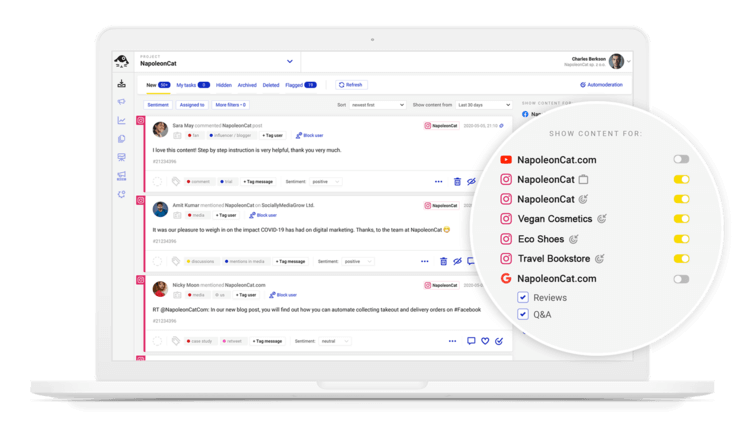
Simplify Social Media
Management with One Tool
- Manage & reply to comments and DMs in one place.
- Monitor ad comments from multiple accounts.
- Automate answers to repetitive questions.
- Schedule posts to multiple accounts, on desktop.
- Analyze performance and monitor hashtags.
- Keep track of your competition.
- Create or schedule in-depth reports in seconds.
What are smart goals in general?
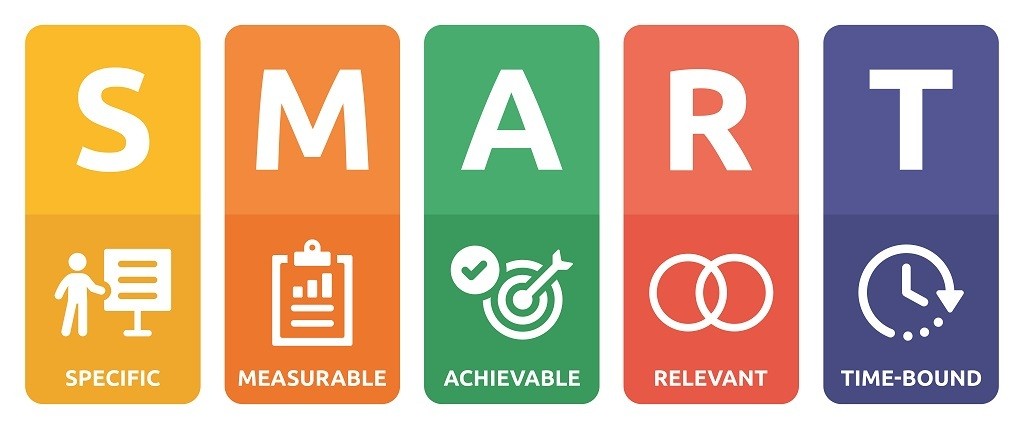
Let’s start with smart (rhyme intended. ;)) Goal setting is great, but it’s not always helpful – if, for example, a goal is formulated in a way that makes it basically unattainable. Or at least difficult to reach.
That’s what the SMART framework is for. To help you formulate goals in a way that makes them much easier to understand and reach.
Here’s what it looks like.
S – Specific
When a goal is too general or vague, it’s hard to know when you’ve actually reached it. So make it as specific as possible. What exactly does it mean to achieve it? What does that look like? And what does that change?
If your goal is to grow your social media audience, where exactly do you want to do it, in what time frame, and by how much?
M – Measurable
This is precisely what it sounds like. If your goal is growing your social media audience or improving your engagement rates, how will you measure it, and how often will you track progress?
A – Achievable
Smart social media goals (and smart goals of any kind) need to be possible to achieve. They have to be reasonable enough, too. So, for example, in the context of growing a social media following, the numbers need to be achievable in the next however many months you define for the goal.
R – Relevant
Any social media goal needs to be tied to broader marketing objectives and business goals. Remember – you’re not just doing it for the numbers (though some, unfortunately, do.) These numbers have to translate into actual business outcomes. For example, they can help to increase brand awareness or improve customer service.
T – Time-bound
If you’ve ever set up any kind of goal without putting a deadline to it, you’ll know how hard it is to actually achieve it. That’s why you should always have a deadline – whether it’s getting 1000 new followers within the next three months or decreasing your response rate on social media by 30 minutes within the next six months.

Measure your social media marketing results
Get in-depth social media analytics for your own accounts and for your competitors, too! Compare accounts side by side and quickly generate or schedule reports – with an all-in-one social media tool.
What are social media goals?
Smart social media goals are specific, measurable, achievable, relevant, and time-bound objectives set to guide and evaluate the success of social media strategies. Let’s just look at some examples of smart social media goals, shall we?
- Building an Instagram audience from scratch to 1000 followers in three months using Reels and sponsored posts.
- Reducing your response rate from 30 minutes to 10 minutes on Messenger within the next two months by applying a new social media management tool.
- Increasing the average engagement rate across social media platforms by 1% in 6 months.
- Driving traffic to your website (a specific target number would be helpful) from a specific social media campaign.
- Getting a 15% conversion rate from an advertising campaign on TikTok.
These are just a few examples, but you get the gist. The more specific a social media goal, the better. I’ll talk about smart social media goals and how to achieve them in greater detail a few sections down from here.
5 benefits of having social media marketing goals
(Let’s keep in mind we’re talking about smart social media goals.)
1. You and your team know what to do.
When a goal is specified in the right way, it makes it much easier to plan tasks and execute your social media strategy. The more specific goals, the less chaos in your day-to-day work.
2. You’re more likely to succeed with your social media activity.
By knowing your goals, you can select the most effective tactics to execute them. Not having goals is essentially throwing spaghetti at the wall and seeing what sticks (for some reason, I love that analogy. 🍝)
3. It’s easier to work with external partners – like agencies, clients, contractors, content creators, etc.
When the goals are clear, and everyone’s aligned on what they are, it’s much easier to build consistent social media marketing that brings the desired results.
4. You know what to improve.
When you have goals, you can measure them. And when you can measure them, you have a clear picture of how your social media marketing is doing. Knowing what works and what doesn’t will let you find new ways to improve your performance and achieve your goals.
5. You can report on your performance.
When you have goals, you have a reference point when analyzing and reporting on your performance, whether that’s for your client or your company board. When there are no goals, there is no reference framework in which to view your performance, which becomes super subjective.
How to set up smart social media goals
Here are some steps to follow to set up smart social media goals.
- Consider broader marketing and business objectives. Where is the company heading? What’s on the road map? What are the expected business outcomes?
- Use the SMART framework to set up smart social media goals. Define them in reference to the overall goals, but make them specific (and also measurable, achievable, relevant, and time-bound.)
- Decide how you will measure them. Define the most important social media metrics and key performance indicators (KPIs). Also, find the right tools to measure them, like a social media analytics platform, and make sure the right people can access it.
- Track them consistently and report on your performance. A social media reporting tool will be invaluable to help you report on relevant wins.
- Adjust your strategy to what’s going on to improve your performance. Analyzing is not enough – take the insights and conclusions and implement necessary changes based on what you see.
5 social media marketing goals (SMART goals examples)
Let’s take a look at a few examples of smart social media goals in more detail, including how to measure them and improve on them.
1. Growing your audience on TikTok
Growing an audience by a specific number is a common goal on a social media platform, fitting right in with broader goals of increasing your brand awareness and social media presence.
KPIs and metrics
TikTok net follower count, monthly new followers, monthly unfollows.
How to measure it
Follow your TikTok analytics to see how many followers your TikTok is getting and where they’re coming from (ads, organic content, specific types of content, recommendations from other TikTok accounts, collaborations with other creators, etc.)
Do it regularly – for example, weekly or monthly, to see exactly what types of initiatives help with speeding up follower growth. This will help you decide what tactics to use to get to your goal successfully.
How to help achieve it
Look deeper into your TikTok analytics to understand the patterns and what helps get your content on the FYP and get new followers as a result.
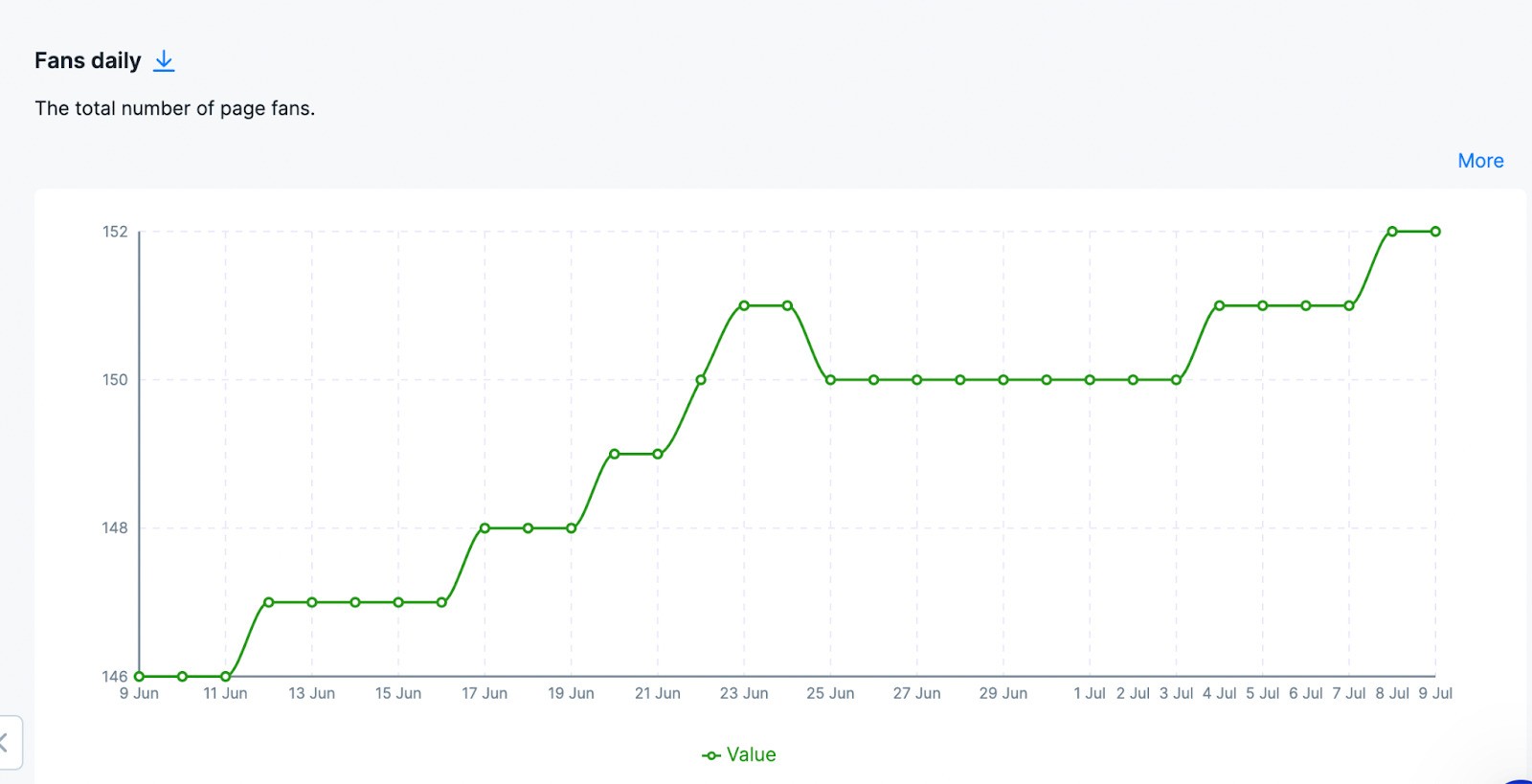
Understand when your fans are most active to try and find similar people in your target audience.
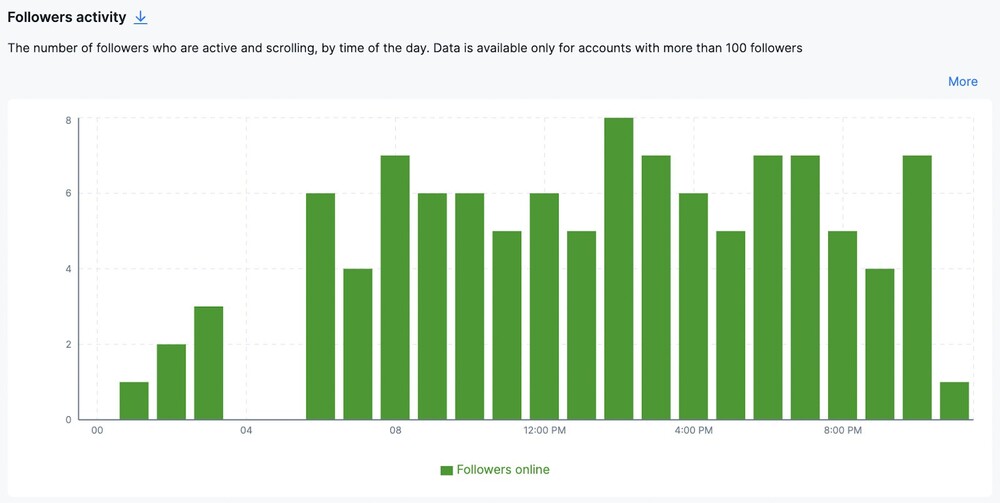
And most of all – know your target audience, i.e., who you’re talking to. The better you know them, the easier it will be to reach them on TikTok and any other social media platform.
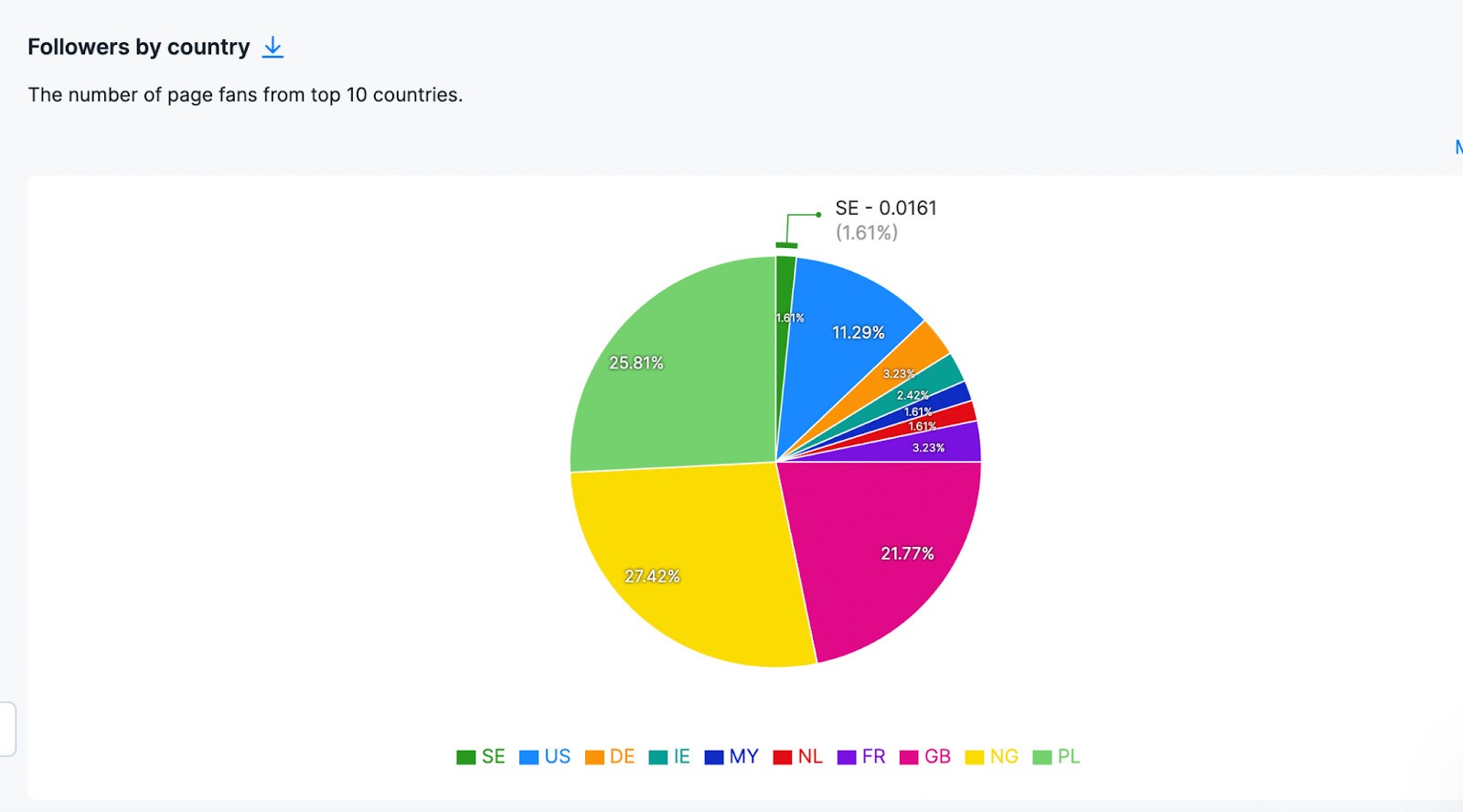
2. Improving your customer service response time on Facebook
Bringing down the time it takes for you to respond to messages or posts is an important goal for any business that does customer service on social media.
KPIs and metrics
average time to respond, longest and shortest times to respond, number of DMs, number of comments, number of replies per moderator
How to measure it
By far, the easiest way is to use a ready-made reporting solution, like NapoleonCat’s inbox activity reports.
When you use the Social Inbox to manage incoming conversations from your followers and customers across social media platforms, you can automatically generate an inbox activity report and see your moderators’:
- Work hours
- New messages
- Average time per moderator
- Longest reaction time
- Average daily reactions
- Replies to posts
- Replies to comments
- Types of moderator reactions (like, unlike, tag message, hide, flag)
The key is to measure it regularly to see whether the improvement you’re seeking is actually happening.
How to help achieve it
Use the Social Inbox not just to measure response time, but to make it much easier for moderators to see new messages across social media channels and respond to them promptly
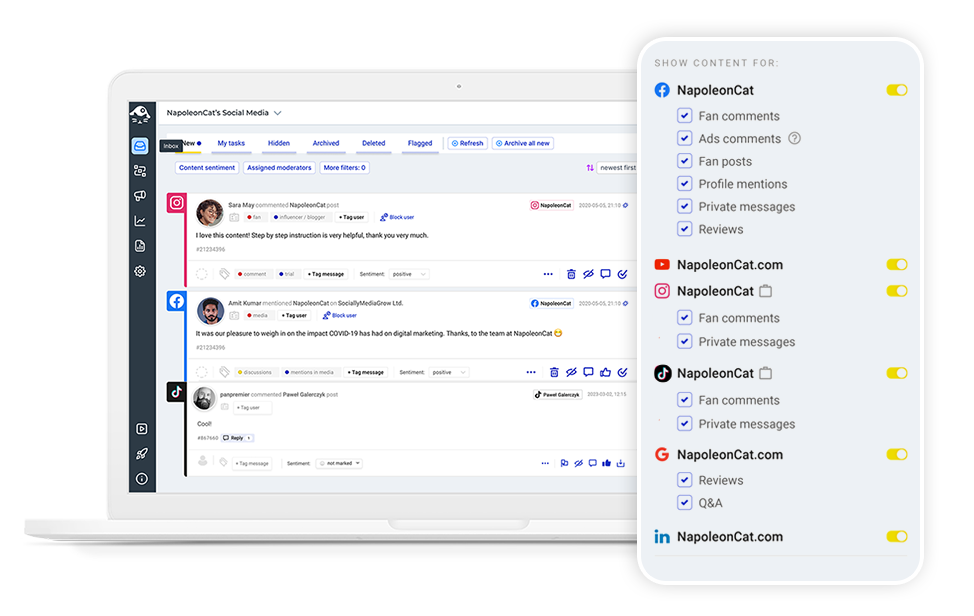
The Social Inbox also makes assigning comments and messages to team members really easy and quick, helping reduce the time it takes to respond to the customer
Use Auto-moderation to automatically respond to straightforward questions that keep repeating. Quick, relevant answers will positively impact your response time.
3. Increasing engagement across platforms
Growing your audience is important – but getting them engaged is even more important in the context of your overall business goals. Because even the largest following won’t mean much if people don’t engage with your brand.
KPIs and metrics
Engagement rate, daily interactions, interaction types (likes, comments, shares, clicks, etc.), interactions per post, average time watched, top most engaging content, best time to post, hourly audience activity.
How to measure it
You can monitor engagement in the native insights for each of your social media channels. But if you want to see your engagement overall in one place, you’ll need a platform like NapoleonCat to gather all the data for you.
Go to the Analytics dashboard and analyze your engagement numbers regularly to see how they change over time and what type of activity on your part you can associate with those changes (for example, advertising campaigns or different types of content).

How to help achieve it
- Closely monitoring what types of content gets people engaged the most and posting more of the types of content that get the most engagement
- Finding the sweet spot when it comes to posting frequency and the best days and times to post to make sure you’re appearing in your audience’s feeds when they’re the most active on the different apps
- Creating a consistent posting schedule using a content calendar like NapoleonCat’s Publisher where you can plan and post content in advance and easily make changes as necessary when you see engagement drops or spikes with different types of content and topics

Simplify Social Media
Management with One Tool
- Manage & reply to comments and DMs in one place.
- Monitor ad comments from multiple accounts.
- Automate answers to repetitive questions.
- Schedule posts to multiple accounts, on desktop.
- Analyze performance and monitor hashtags.
- Keep track of your competition.
- Create or schedule in-depth reports in seconds.
4. Increasing website traffic from social media
This is the type of goal that clearly connects social media to the overall marketing strategy and specific business goals. And it’s all the more important as some brands get fixated on vanity metrics like the number of likes, which sometimes might not correspond to actual business outcomes (you can literally have hundreds of likes on a post with just a handful of clicks through to your website.)
KPIs and metrics
Clicks, click-through rate, website views, website visitors.
How to measure it
To measure website traffic, you need to look beyond social media analytics and look into Google Analytics.
Look for visits coming from specific social media platforms. Also, you can use UTM tags with the links you include in your social media content to assign clicks and visits to specific social media campaigns.
How to help achieve it
- Include clear CTAs in your social media posts so that people know they’re supposed to click your links or go to your bio to click a link there.
- Don’t forget about having clear goals for each of your social media content pieces. Not each one of them has to have the goal of driving website traffic, but it helps to decide the portion of your content that’s supposed to do that.
- Taking care of engagement goals is also important – clicking a link in your post or bio *is* a type of engagement.
5. Increasing campaign conversion rates
Again, we’re getting closer to other business goals here. Depending on how you define specific conversions, this will help you achieve other business goals, such as generating leads or sales.
KPIs and metrics
Conversion rate, clicks, sales.
How to measure it
This will depend on what you define as a conversion for your specific campaign. It could be, for example:
- clicks through to the website
- content downloads
- webinar sign ups
- form completions
- sales
So, depending on what conversion is in the context of a given campaign, you might have to look at your social media analytics, website analytics, downloads, etc.
Your conversion rate will usually be the number of conversions divided by the number of visitors (or content viewers)
How to help achieve it
- Include and optimize CTAs in your content so people perform the action you want them to. It’s useful to A/B test your CTAs, too, to figure out what wording or images work better (for example, in your social media ads.)
- Again, nail down your audience engagement goals for this one – as engagement is crucial when it comes to conversions.
- Know your audience really well to figure out what works best to get them to convert – and when.
Got your smart social media goals?
Keep them in mind when planning any social media marketing activity, and monitor your progress on a regular basis. Setting smart social media goals will help you see much better results much more consistently.
And if you’re looking for a comprehensive tool that will help you measure your performance in relation to your goals and keep improving, test NapoleonCat completely for free.
You may also like:
- How To Find Your Target Audience On Social Media
- How to Measure Brand Awareness on Social Media
- Meet The Best Social Media Benchmarking Tool
- Competitor Mapping: Why And How To Do It
- Social Media Competitor Analysis – Complete Guide
- How to Track Competitors on Facebook
- How to Analyze Competitors on Instagram
- Top 10 Competitive Intelligence Tools
- Creating Facebook and Instagram Analytics Reports: A Guide
- How to Track Instagram Follower Count Over Time


